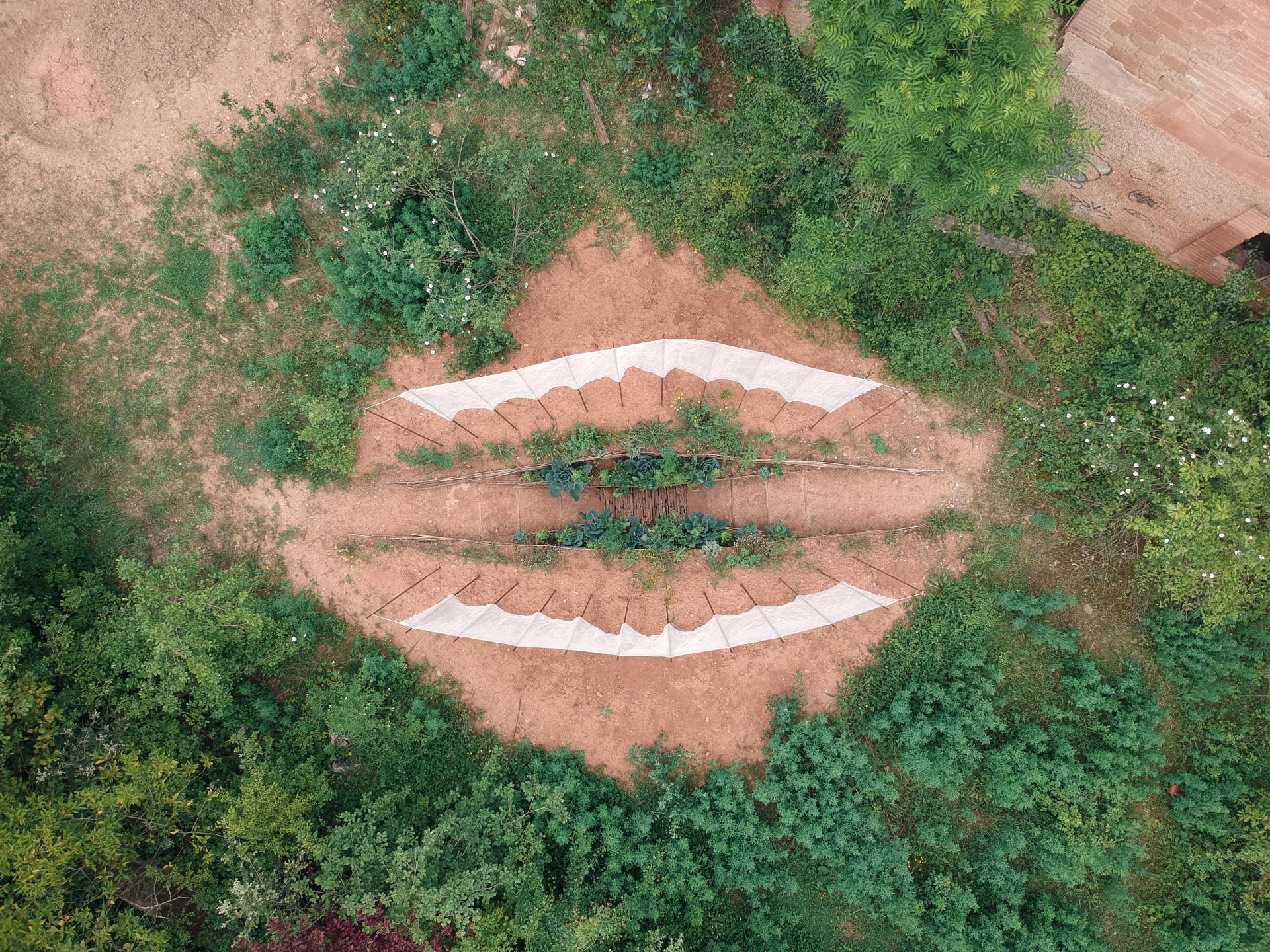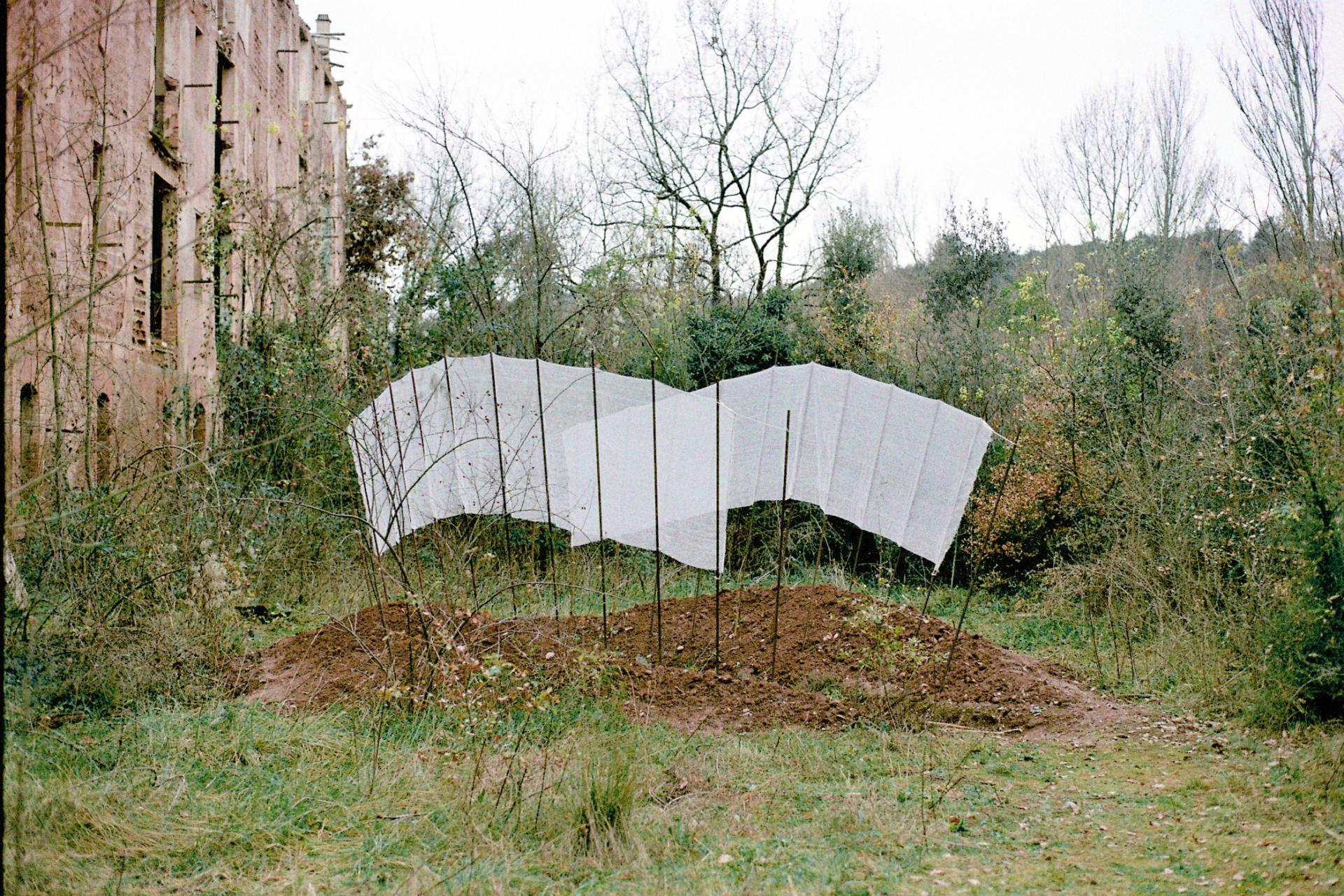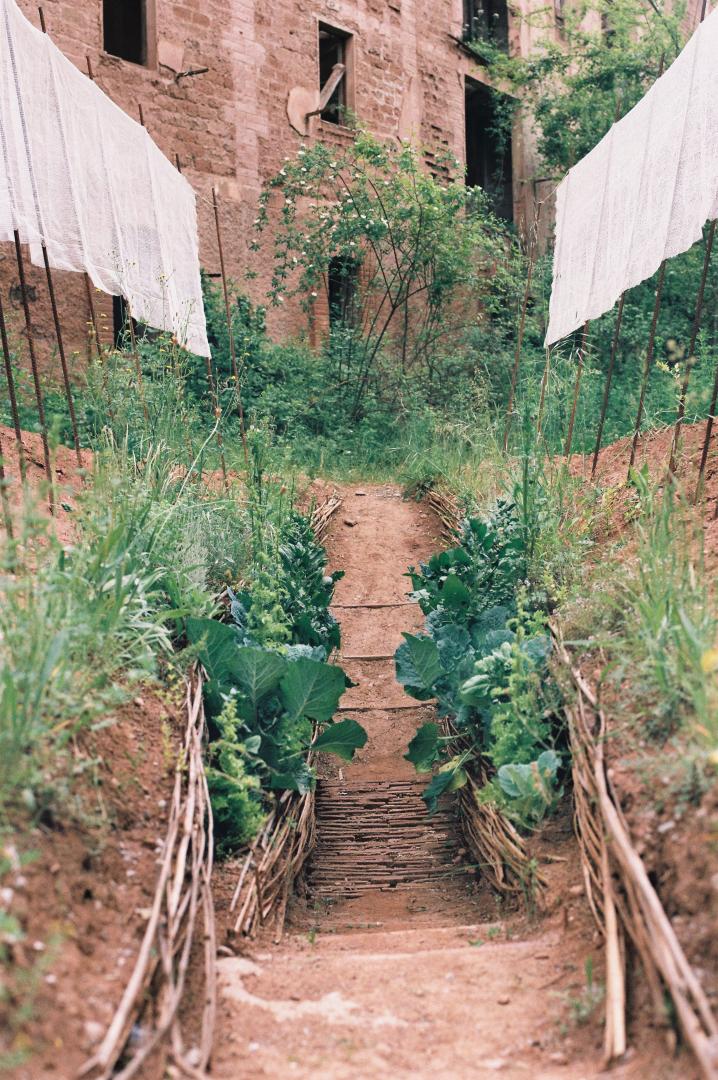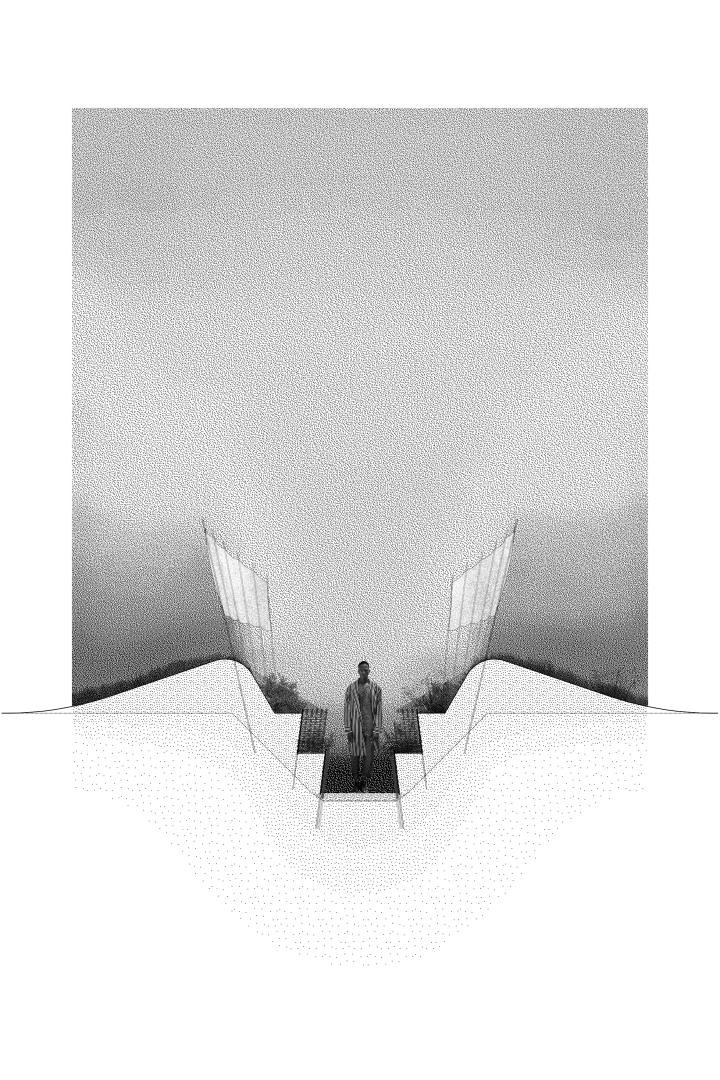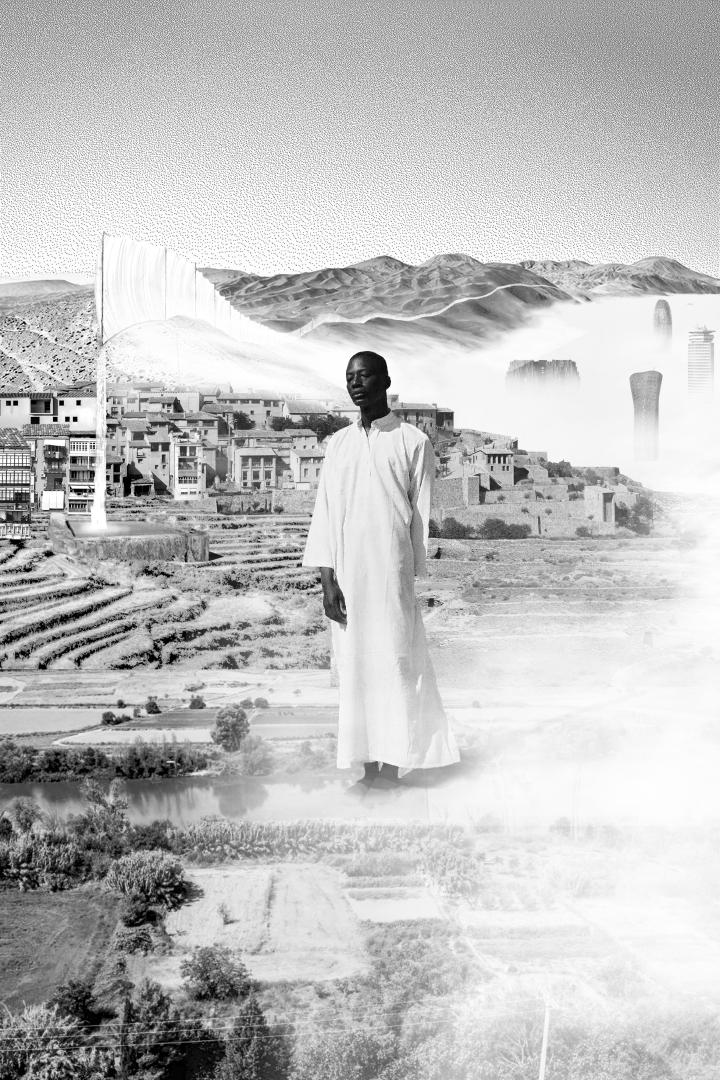Vale
Basic information
Project Title
Full project title
Category
Project Description
Mediterranean landscape is transformed by centuries of human activity, natural balance not longer exists. Our culture must adapt to extreme heat and drought and learn from those places we will become. Comfort will come from deconstructing the spaces we inhabit, incorporating natural cycles that we waste.
Valle is a prototype for public spaces, an installation that generates comfort by collecting humidity and that shows the functioning of our territory through hypernatural exaggeration.
Geographical Scope
Project Region
Urban or rural issues
Physical or other transformations
EU Programme or fund
Which funds
Description of the project
Summary
Our whole planet is transformed and affected by hundreds of years of human activity, direct & indirectly. We’ve to be more aware of our actions or the lack of them, as the dynamic natural equilibrium is totally altered. The awareness and knowledge of our environment are necessary to understand the new conditions and adaptations to realize over a totally anthropic land, so we must look and learn from those places that we will become.
Droughts and rising temperatures will increase the heat island effect in cities, achieving thermal comfort for citizens without adding energetic consumption is related to the deconstruction of the streets, squares and spaces we inhabit, incorporating the local natural cycles that we now ignore, hide or waste: the collection of rainwater, atmospheric vapor, the evapotranspiration of plants, the generation of topographic microclimates, etc.
Vale is a prototype of a street, square or park space, an installation that generates comfort thanks to the collection of humidity through the topography and a fog catcher. It's also a pedagogical element, which tries to explain the functioning of our environment through the senses, reproducing a piece of territory in a reduced, accessible space. Vale seeks to increase the sensations of the Mediterranean ambient so that the population can understand and feel this specific territorial configuration.
The installation, realized as an art internship in Konvent (Barcelona), is an 80cm wide and 9m long path that descends 1 m in the central part. The excavated soil is piled up on the sides, building reed terraces that resemble cultivation patches. A fog-catching structure, like the ones used in coastal arid regions, is placed at the top of the mountains. This system generates a microclimate through the humidity gradient. The accumulation of water in the bottom of the installation is sought through the topography, the evapotranspiration of the plants and the collection of water through the fog trap.
Key objectives for sustainability
In order to expose the presented terms related to Vale prototype I may refer to Elizabeth K. Mayer “Sustaining Beauty. The performance of appearance” article, which was the main theoretical inspiration for the project.
The 3 main pillars of Sustainability: Ecological health, social justice and economic prosperity, generate a series of ethics that inter-relates each aspect. Sustainability has a global interpretation derived from globalization, but is mainly particular, each place has it’s own challenges and characteristics. In terms of ecology we must embrace our duty as gardeners, know and deal with the threats of our habitats. Vale proposes a mixture of plants that performance in multiple aspects that we can benefit: food, sensory appreciation, freshness, shadow, etc. while we offer them the optimal sun, water and soil condition. Horticultural species have been placed on the lower terrace: parsley, cabbages, spinach, endives, those that were in season at the time of planting. On the upper terrace, aromatic and medicinal species native to the understory have been planted: sage, thyme, rue and honeysuckle to colonize the fog catcher.
The project was built using more labour force than the cost of the materials itself. Orienting projects in reduction and proximity of materials used, dedicating more time to design and execute not only reduces carbon footprint but also can generate job places, awareness about the site and is the only option to stop resources overexploitation. Vale also is projected with time and natural processes, embracing the unexpected. The reeds for the terraces were obtained from the edges of the fields and certain areas of the riverside, traditional cutting tools were used to tear each reed in multiple parts to be easily braided. This material biodegrades after a few years, once the vegetation is installed.
Key objectives for aesthetics and quality
Ethics generated by sustainability influence art, culture and aesthetics, we no longer appreciate certain manifestations if they imply environmental harm. Sustainable design must go beyond functionality, and must perform also socially and culturally. In the pre-industrial era our festivities, our calendar was linked to natural and productive cycles: harvest, blossoming, planting, flooding, etc. Beauty appears when we experience and recognize the connections between a landscape -natural and particular- and our ethics influenced culture and aesthetics.
Vale is designed recognizing this cultural and ecological experience; it is a process, a dynamic particular performance. When the visitor walks down the narrow path, they will notice their legs in shade and surrounded by vegetation and humidity, while keeping their heads sunny and warm. This gradient explains the functioning of the Mediterranean valleys: the peaks most exposed to the sun and the wind, with less vegetation, the terraced landscape to achieve full benefit of the water and the bottom where the river runs. The vegetation changes over the year and depending on the terrace.
The Vale prototype is an attempt to exaggerate and concentrate a natural element of the environment in a reduced, accessible space, also known as hypernature. Like Olmsted built parks that explain the vast and virgin north American territory, or Capability Brown configured the bucolic pastoral gardens for the aristocracy in Britain, Vale seeks to increase the sensations of the Mediterranean ambient so that the population can understand and feel this specific territorial configuration.
It is also the beginning of a line of research on the pedagogy of public space and knowledge of the local environment. The city has the capacity to have spaces that reproduce and use, to explain them, processes, natural distributions, the consequences of human transformations and their particular and local socio-economic landscapes.
Key objectives for inclusion
With industrialization and the rural exodus, society began a distancing from metabolism and natural cycles. These processes were supplied by engineering looking for a supposed efficiency and hygiene that allowed human growth and agglomeration. The paradigms of degrowth and naturalization of cities returns us to the need to reconnect with nature. We must recover certain forgotten knowledge and introduce it back into society to achieve communion with the environment.
The first and constant step is pedagogy, us, technicians and scientist, must help society recover and improve shared nature knowledge, which is the common base for every citizen regardless of our differences. By working with natural materials that are not fully monetized every person can take responsibility, join each other and help making their cities and villages more sustainable and green.
Vale prototype is a public space that may be designed by technicians with specific formation, but transformed and conquered by nature -and people as part of it-.
Physical or other transformations
Innovative character
Vale is meant to be a prototype of a performative public space, a biodiversity node that we take care of, which generates food, thermal comfort, and connects us with our own nature and the landscape we inhabit. As explained before, sustainability aesthetics and ethics, like human rights, it’s infiltrating in our culture and art. Designing a space that improves a habitat, enhances life, and that uses local, nature or easy manufactured materials, is a prori a space that society can adopt and that responds to our actual challenge as a species.
Like botanical and palace gardens were a crucial in scientific investigation, gather knowledge and also worked as exceptionally beauty public spaces where the visitor could travel without moving, nowadays public spaces must help recovering the lost link between nature and humans.

